Why Go
The afternoon was fading as I wandered through the tired alleyways of Corfu town, and restless in a country where every day felt like Sunday, I looked out across the gentle Mediterranean sea to a country that I knew would make me feel alive. Albania.
The next morning I prepared to get on the hydrofoil to the town of Sarandë (also known as Saranda), half an hour away. Concrete high rises stomped round the bay like an amphitheater, half of them unadorned with windows or paint. The throbbing town beach was made up of equal parts shingle and cigarette ends. The roads were pock-marked and power cuts were frequent. Yet somehow Sarande feels fresh.
The town follows the curve of the emerald sea, which brings a cool breeze through the palm trees that line the promenade, to the streets that step up the hills and buzz with Internet cafes and arcade rooms. And what Sarande lacks in physical charm, it makes up for with its hospitable people.
When the sun sets over the bay, thousands descend on the prom by the beach. Old men in brown slacks watch life slowly pass as they perch on the sea wall, next to young guys checking out the glamorous girls. Tavernas heave with holiday-makers enjoying fresh seafood risotto, and snake charmer sounds
languor through the streets from the rooftop bars, where young things dance to live Albanian music.
This town of 30,000 is a major domestic holiday destination, though you will barely see a foreigner. In fact the tourist office might be the saddest building in Sarande. A glass dome built on stilts out in the water, it surely looked futuristic in the early nineties, when it was built after the fall of the most paranoid dictator on the continent – Enver Hoxha. It now looks like a tired prop from Back to the Future. So get to Sarande before the world catches up with what Albanians already know: this town is the gateway to some of the most beautiful mountains, springs and beaches in Europe, as well as gorgeous Balkan towns such as Gjirokastër and the ancient city of Butrint.
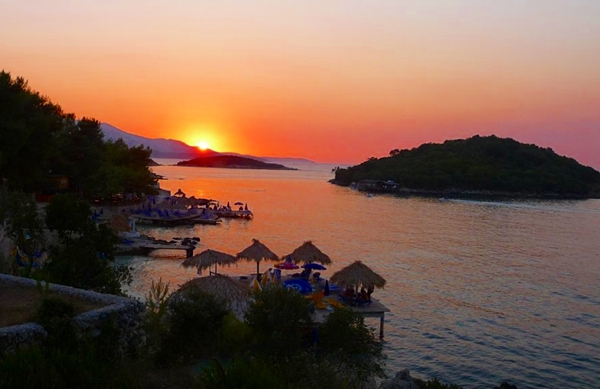
Insider Tips
- There are flights to Tirana's Mother Teresa airport all year round, from there it is possible to take a bus to Sarande. But the best time to visit the Albanian coast
is in summer, with the pristine beaches surrounding Sarande are the perfect antidote to temperatures that can reach the forties.
- Easyjet flies from London Gatwick to Corfu Town from March to October. From there, the 9am hydrofoil leaves for Sarande from €38 return with Ionian Cruises Expect the skipper to hold onto your passport for the trip's duration.
- There is currently no visa fee for entering Albania at Sarande port customs.
- The Albanian currency is the Lek, and there are plenty of ATMs in Sarande that take international cards. Outside the town gardens, dozens of men openly
exchange Euros for Lek at a much better rate than Bureau de Change, although this practice is illegal. Make sure to spend your cash before you leave, Lek cannot be exchanged outside the country.
- What makes Albania great is its people, most of whom will go out of their way to help you. But you will find the odd person trying to rip you off, so be sure to check your change and pay what you think is a fair price for items.
Where to Stay
Backpackers SR Hostel is set in a modern apartment just off the town beach. A converted family home, on first entering the hostel dining room the mind flips to relief. Splashed across the wall are kind words from travelers, calling for the owner Tommy to become ‘major of Sarande, no president of the world!' Then comes bewilderment, because in the corner lies an army helmet and grenade. The owner admits with a wink, ‘They're from 1997, when the government pyramid schemes went bust. We all lost our life savings, so we all attacked the government. A bunch of us broke into some army barracks, and we took some, ahem, souvenirs.'
There is nowhere like Albania. There is no generosity like Albanian generosity. A tour guide who becomes a friend, Tommy becomes as much or as little a part of your stay as you wish. He is happy to meet you from the bus station or port and make you breakfast. He will offer to take you to exchange your money, and answer all those tiresome questions about Albanian politics and history with humor. His English is perfect, his knowledge of great restaurants, bars and beaches in the surrounding area unparalleled. Prices average €10 a night for a four-bed dorm.
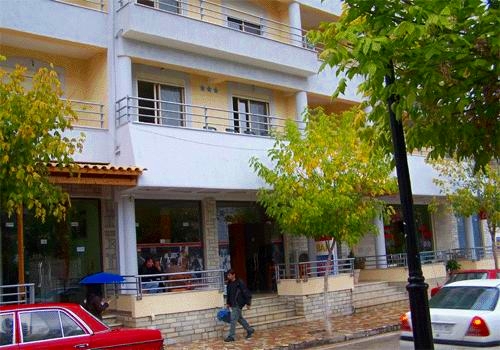
Sarande may not offer boutique hotels or chic architectural design, but the town is nevertheless perfect for luxury stays on a budget. Reserving online is not possible for all but a few 3-4 star hotels such as Brilant Hotel (which is a nice choice if you want a room with a private veranda and sea views) so the best way to find a bargain stay is to simply rock up to town and ask around. You should be able to pick up a plush room with great views for €30 a night, compared to €120 across the strait in Greece for a similar pad. Try the brand new hotels first, they often offer the best rates.
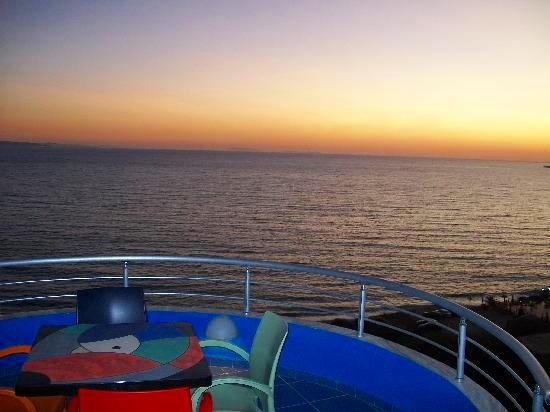
What to Eat
Albanian food on the Rivera is typically Mediterranean fare, with seafood and feta salad mainstays on every taverna menu. But one of the region's best dishes is baked lamb's stomach on a bed of tomatoes and olives, which is cooked in olive oil until tender. After dinner knock back some Raki, the local firewater made from grapes mixed with herbs and honey. Also make sure to try fresh seafood, especially mussels. These come from Lake Butrint an hour away, and they are perfectly sweet and wonderfully salty at Paradise on the promenade.
The ancient farmer's market, set in a crumbling stone building across from the bus stop for Butrint, is otherworldly. Street food in Sarande is also great, with old popcorn machines and corn on the cob sellers lining the beach. Indulge in some cheese and bacon galettes at 9 Rruga Mithat Hoxha for 60 cents.

What to See and Do
Most of the area's attractions are outside Sarande, but easy to get to. Archaeological site Butrint is the most famous destination on the Riviera, and the ‘quietest, coolest, most pleasant place in the world' according to philosopher Cicero in 56 BC. Occupied by Greeks and Romans, Byzantines and Venetians, by 4 BC the city was a commercial center of the world. Sites like the grand amphitheater display the old city's prosperity.
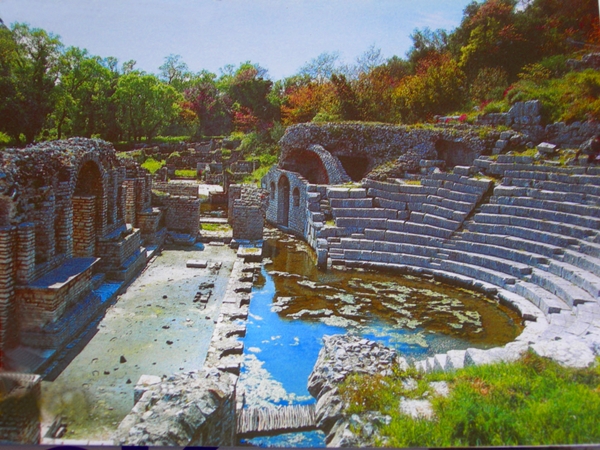
But Butrint was abandoned in the late Middle Ages due to flooding. Its marshy past preserved the acropolis, fountains and baths and Butrint is now an idyllic national park with UNESCO status. The view by the castle at the top of the hill is beautiful. Butrint lake is peppered with mussel catchers, with grand hills following the lagoon to a plateau where distant castles are sprinkled across the fields. Marshes follow the Vivari canal out to sea, the water nudging against deserted beaches in great white wisps.
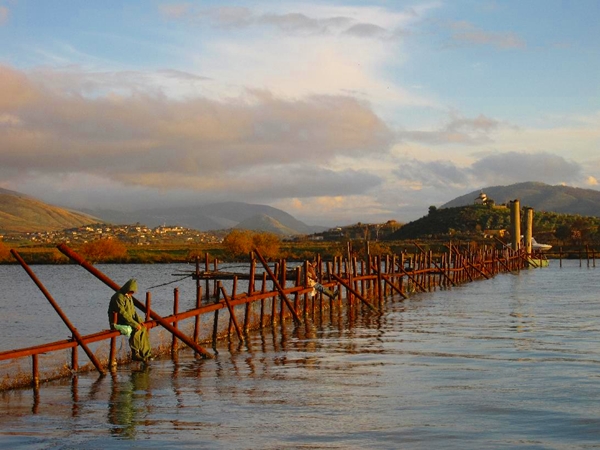
To take the bus to Butrint, turn left at the junction 100 meters down from port customs. Here you will see the bus stop. There are buses every hour during the morning (about €0.60 return). The archaeological site is only 14km away, but the journey will take an hour because the road is little more than rubble. Otherwise take a taxi to Butrint for about €2. Entrance costs about €5 for non-Albanians.
On the way back to Sarande, ask the bus driver to drop you off at Ksamil. The village is wrecked, many buildings lie face down on the ground. But these eyesores are not the result of earthquakes, but corruption. Some builders knowingly buy land from owners who are not really the owners, and another concrete carcass is hauled out from the ground without permission. Unless the builders have enough money to pay off the politicians, the government can come with a crane one day and pull the building down. Too expensive for developers to start again, the apartments are left collapsed, leaving areas of Albania decimated.
But despite its problems, Albania is a naturally beautiful country. Nowhere is this more true than in Ksamil, which means little islands. Rippled by the clear sea, one of the lush islands has a shack which serves grilled fish to the stronger swimmers who can make it over. The beach is also stunning and rarely too crowded, with the chatter of Albanian sunbathers as pleasant a sound as the Cicadas in the trees.
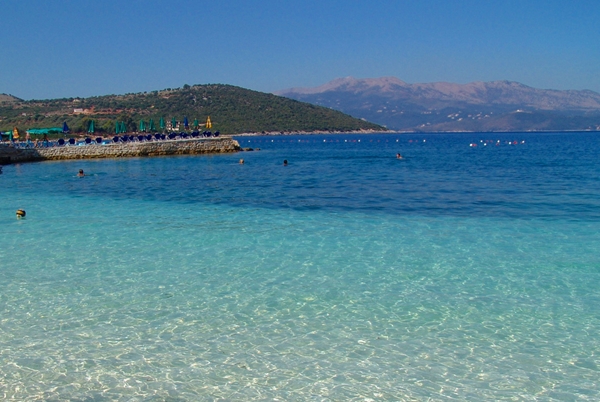
The Blue Eye is a geographical phenomenon, an azure spring where visitors can throw a stone into the eye only to see it bubble back up to the surface. Shaded by woods, this is a pleasant spot for a picnic. Alternatively, there is a restaurant by the waterfall overlooking the springs. To get there, take a bus going to Gjirokastër from Sarande's bus depot – buses leave town all morning. Ask the driver to drop you off by the springs, which are slightly over an hour away. From the main road, it is about a mile walk to the Blue Eye. Others will be taking the same route in summer.
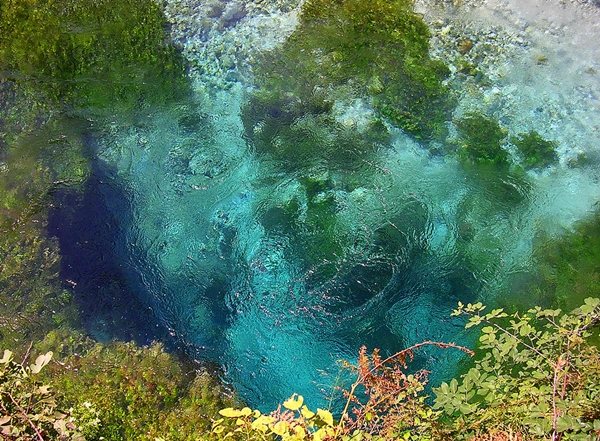
Visit Hoxha's birthplace Gjirokastër. It is an old-world town of 40,000, centuries away from the brash buildings in Sarande and Ksamil. Nestled in the Drinos river valley, the Ottoman houses with unique stone roofs charmingly tumble down from the 13th century Citadel.
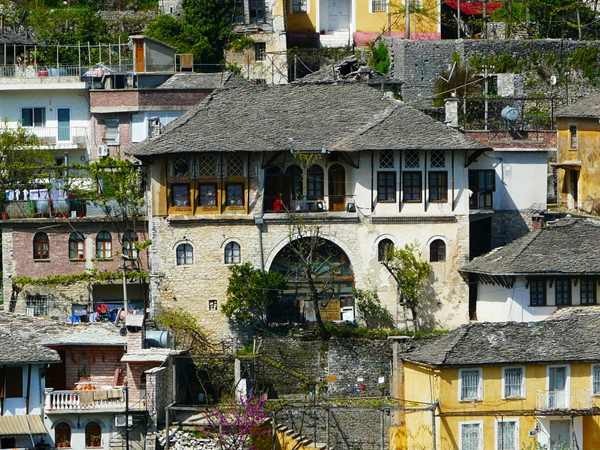
Photos: Ailsa Ross, G Travels, grigora, mafleen, JnM_RTW, P U M A, ImogenX
